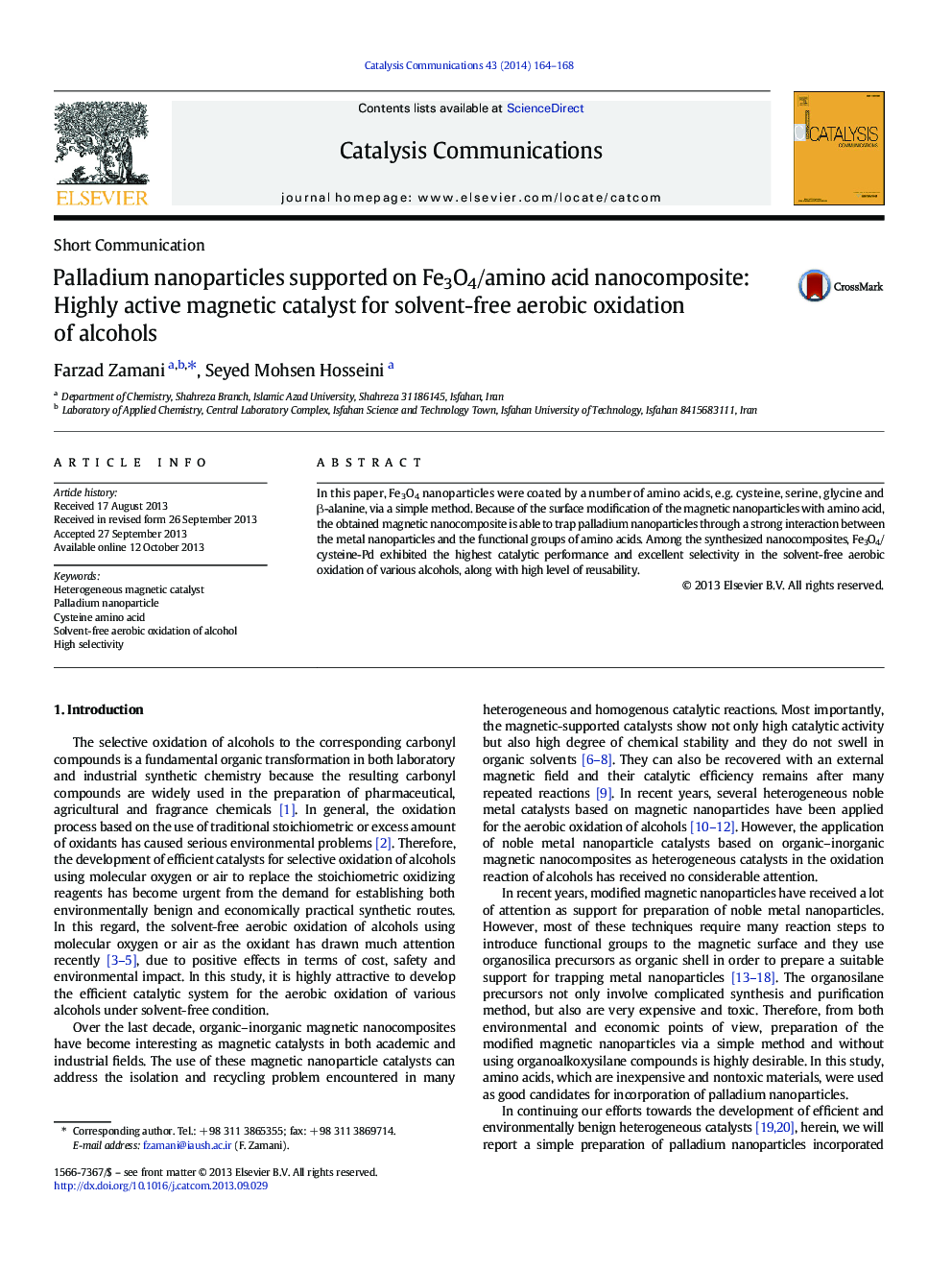| کد مقاله | کد نشریه | سال انتشار | مقاله انگلیسی | نسخه تمام متن |
|---|---|---|---|---|
| 50434 | 46794 | 2014 | 5 صفحه PDF | دانلود رایگان |

• Palladium nanoparticles exhibited a strong interaction with cysteine-coated Fe3O4 nanoparticles.
• This magnetic nanocomposite catalyst could be prepared by a simple method.
• Different aldehydes were synthesized in high yields and selectivity under solvent-free conditions.
• The magnetic catalyst showed high level of reusability.
In this paper, Fe3O4 nanoparticles were coated by a number of amino acids, e.g. cysteine, serine, glycine and β-alanine, via a simple method. Because of the surface modification of the magnetic nanoparticles with amino acid, the obtained magnetic nanocomposite is able to trap palladium nanoparticles through a strong interaction between the metal nanoparticles and the functional groups of amino acids. Among the synthesized nanocomposites, Fe3O4/cysteine-Pd exhibited the highest catalytic performance and excellent selectivity in the solvent-free aerobic oxidation of various alcohols, along with high level of reusability.
A number of Fe3O4/amino acid-Pd nanocomposites were successfully prepared by a simple method. The results showed that Fe3O4/cysteine-Pd nanocomposite has the highest catalytic activity in the solvent-free aerobic oxidation of alcohols among the other synthesized nanocomposites, which is probably due to a strong interaction between Pd nanoparticles and sulfur groups in the cysteine structure.Figure optionsDownload as PowerPoint slide
Journal: Catalysis Communications - Volume 43, 5 January 2014, Pages 164–168